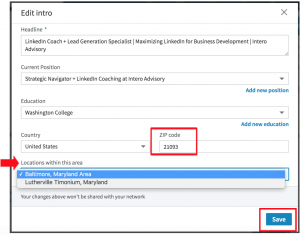As in real life, first impressions matter in email marketing. The inbox is a noisy and crowded place. You have around 60 characters to capture your consumer’s attention in the subject line.
Following our recent blog post on what words to avoid using in your subject line, in order not to trigger spam alarms, we now want to show you how to create a perfect subject line for your business and increase your open rates.
There have been a ton of studies and debates posted on the web, arguing what phrases and power words produce higher open rates. Here I’ll cherry pick the words, combinations and formatting of different subject lines, to help you write the best one for your business and emails.
Subject lines that don’t suck
To see how these techniques look like in action, here are a few I’ve come across recently that have stood out in my inbox
![]()
Here we see the correct use of hexadecimal symbols. Lovebox has found a relevant symbol and combined with power words such as ‘First’ and ‘Announcement’ to get me to open the email.
![]()
This subject line tapped into my curiosity and FOMO (Fear of missing out) at the same. It made me think: “I’m invited? To where? Am I the only one invited? I feel special”. The invitation turned out to be a free beta invitation to a new music streaming service they are launching. The catchy subject line was not at all click-bait, the body of the email included an exclusive offer. It did feel a bit special.
![]()
Yes! Emojis have made it into email. You might not be as excited to see them spread through the cyberspace as me, but come on, they’re pretty cool. Here we see them being used in a relevant context, creating a nostalgic feeling of mid-1990’s computer games.
![]()
We can always count on Pact Coffee to play on words with tongue and cheek. When it came to this email, I can see that they’re promoting a specific roast of coffee that they are running out of. The words “gone tomorrow” adds a certain urgency that makes me open and click.
When it comes to constructing your subject line, there are 3 things you should always consider and follow like a ritual.
- Length Matters
The verdict is still out on whether shorter subject lines drive more opens. A shorter subject line may be more likely to catch the reader’s attention, but it still has to be reflective of the content inside. As the subject line contains less detail on the content, the user might not find what’s inside the email interesting after having curiosity drive them to open it.
Additionally you should be aware of each email client’s subject line preview length For example, Gmail only shows the first 70 characters, where Hotmail / Live and Yahoo Mail show 60 and 46 characters respectively. Do some research on different mobile clients to find out the current limits too.
- Symbols and Emojis
Marketers have been using hexadecimal symbols for a while now, but they are not as widely used as you would expect because they are not compatible with all email clients. We’re now seeing some email clients such as Gmail supporting emojis and hex symbols, which we saw Pact and Lovebox use in examples I showed. Either way, they should always be used in context, otherwise it can have a bad effect on your brand and be seen as childish.
- Testing
Lastly, always A/B test. You can’t 100% know which subject line will work best, so set up an ‘A/X test’ to try out 4, 5 different subject lines. Personally, I send my campaigns on Tuesday noon with A/X test in place and let it run for 20 hours. The winning subject line and email will then be sent around 8.30AM on Wednesday morning so it’ll be one of the first in users’ inbox when they get to work.
After A/X testing and sending a couple of campaigns, be sure you use ‘Campaign Comparison’ to see which campaigns worked best for your data-set and look to improve future ones! By comparing your results with your industry benchmarks you can always have specific goals to aim at and improve your email campaigns over time.
With all that said, now it’s time to get to work! Which of these techniques are you currently practicing and which ones are you looking to implement?
(242)
Report Post



